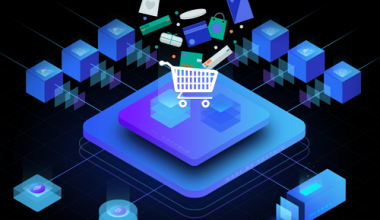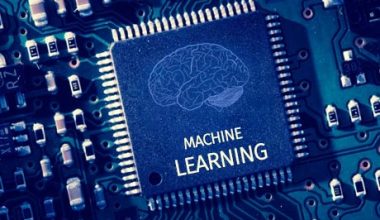The 21st century has been characterized by remarkable technological advancements, none more promising than the advent of 5G, the fifth-generation wireless network technology. Envisioned as a technological superhighway, 5G offers the promise of vastly improved data speeds and dramatically reduced latency. This ushers in an era of seamless, real-time connectivity that goes far beyond traditional notions of communication.
Rather than just connecting people, 5G stands poised to connect everyone and everything – from individuals to machines, and everyday objects to complex devices. In doing so, it takes the concept of an interconnected world to an entirely new level. Yet, 5G is more than just a conduit for faster, more efficient connections. It holds the potential to transform industries and spur innovation on an unprecedented scale.
This article delves into the use cases and applications of 5G across various sectors, demonstrating how it is facilitating transformation and enabling innovation. It will also shed light on the future prospects of 5G, outlining the potential opportunities and challenges that lie ahead. So let’s get started!
5G Technology Explained
At its core, 5G is much more than an upgrade of the existing 4G LTE technology. It is a fusion of new design principles and technologies aimed at meeting the diverse needs of a future, fully connected society. It introduces advanced network architecture such as Massive MIMO, Beamforming, and Network Slicing, increasing the capacity to handle data, offer faster speed, and improve responsiveness. The implementation of this technology is not just about speed but expanding possibilities in various sectors such as healthcare, smart cities, manufacturing, agriculture, entertainment, and media.
5G Use Cases in various areas.
- Healthcare

With 5G’s ultra-low latency and high-speed connectivity, the healthcare sector is experiencing a considerable enhancement in telemedicine and remote patient monitoring. For example, Mercy Virtual, a virtual care center in the US, has been harnessing 5G to provide round-the-clock care to patients, right from their homes. This includes real-time health metrics and virtual consultations, thus improving accessibility and efficiency in healthcare.
Moreover, 5G is also paving the way for remote surgeries, enabled by the real-time, high-definition transmission of data. A landmark event occurred in China when a surgeon conducted a successful remote brain surgery on a patient 3000km away, made possible by the power of 5G. Thus, 5G is transforming healthcare, transcending geographical boundaries, and offering real-time, life-saving services.
- Smart Cities
Smart cities are about efficiently connecting people, processes, data, and things. By deploying 5G, cities can ensure seamless and efficient data transmission, leading to better city services. For instance, San Diego, USA, is using smart streetlights equipped with sensors and 5G connectivity to gather information about traffic and pedestrian movement. This data helps city planners optimize traffic light sequences, reducing congestion and improving mobility.
Further, with 5G, real-time response will become a reality. Let’s take the case of public safety. In the event of an emergency, 5G can facilitate instantaneous data transfer from surveillance cameras or sensors to emergency services, significantly reducing response times.
- Manufacturing
In the manufacturing sector, 5G is offering new avenues for enhancing production efficiency and safety. For instance, BMW has deployed a private 5G network in its German factory, enabling automation and real-time communication between machines. This has not only improved their production rate but also provided the capacity to make quick changes in the production line.
Moreover, with 5G, factories can utilize Augmented Reality (AR) for training and troubleshooting, minimizing errors, and increasing operational efficiency. For example, Honeywell has integrated 5G and AR technology for faster and more effective training, thereby reducing downtime and costs.
- Agriculture
Farmers are leveraging the power of 5G to optimize their farming practices. By using sensors connected via a 5G network, they can gather real-time information about soil moisture, crop health, and livestock conditions. In the Netherlands, KPN and Microsoft have been using 5G to monitor and analyze the growth and health of crops in real-time, leading to increased yields and reduced waste.
In livestock management, 5G connected devices help farmers monitor the health of their animals remotely, providing prompt and precise care. For instance, in the UK, Cisco and the National Farmers’ Union have implemented 5G to track cattle health and behavior, ensuring better farm productivity.
- Entertainment and Media
5G is reinventing the way we consume media and entertainment. For instance, with the advent of 5G, South Korean telecom giant SK Telecom has introduced a virtual reality (VR) streaming service using Facebook’s Oculus VR. This platform provides users with a truly immersive viewing experience, with ultra-high definition video and virtually zero latency.
In the sports world, 5G is revolutionizing fan engagement. For example, Verizon implemented 5G connectivity in the NFL stadiums, enabling fans to view replays, player statistics, and different camera angles in real-time on their smartphones. It enhances the fan experience, making it more interactive and engaging.
Future Outlook and Challenges
Looking forward, the future of 5G teems with potential but also with challenges that need to be addressed to truly harness its transformative power.
- Infrastructure Costs and Availability: The cost of deploying the infrastructure required for 5G is substantial. It involves setting up new cell towers, upgrading existing ones and developing the technology to support the network. Also, it requires a dense network of antennas because of the higher frequency bands of 5G, which could pose logistical and regulatory hurdles.
- Global Access Disparity: There is a stark disparity in 5G access worldwide. While developed nations are racing ahead with 5G adoption, many developing countries still grapple with providing basic 4G services. This disparity threatens to widen the global digital divide, leaving some parts of the world disconnected from the digital leap that 5G represents.
- Security Concerns: With increased connectivity comes an increased risk of cyber threats. As 5G networks become more integrated into our daily lives and critical infrastructures, the security of these networks becomes paramount. This challenge involves not just technical aspects but also regulatory and policy measures to ensure secure and reliable 5G networks.
- Health and Environmental Concerns: Some concerns have been raised about the potential health and environmental impacts of 5G due to the increased number of antennas and higher frequencies used. While current research indicates that 5G falls within safety guidelines, ongoing monitoring and research are necessary.
Despite these challenges, the future of 5G remains promising. 5G holds the potential to act as a catalyst for a wide range of technologies and sectors:
- The Internet of Things: With its high speed and low latency, 5G will enable the expansion of IoT devices, leading to smarter homes, factories, cities, and more.
- Machine Learning and AI: The vast amounts of data that 5G networks can handle will fuel the growth of machine learning and artificial intelligence, potentially leading to more accurate predictive systems in areas such as weather forecasting, healthcare, and more.
- Remote Work and Learning: As 5G networks become more common, they will make remote work and learning more efficient, enabling high-quality video conferencing and real-time collaboration.
- Autonomous Vehicles: 5G will play a crucial role in the development of autonomous vehicles, providing the necessary speed and responsiveness for these vehicles to operate safely and efficiently.
As the 5G landscape continues to evolve, its impact across various sectors and aspects of our lives will become more pronounced. It truly represents a new frontier in communication and connectivity, one that holds the promise of transforming our world in ways we are just beginning to imagine. However, it is critical to address the accompanying challenges to ensure that this technology serves as a force for progress, inclusivity, and sustainability.
Conclusion
In essence, 5G is not just about faster data speeds but about creating a more connected and efficient world. From the way we access healthcare services, manage our cities, to how we produce goods and consume entertainment, 5G is redefining it all. It is a testament to human ingenuity and the relentless quest for progress, unlocking a new realm of possibilities for societies worldwide. However, it is equally important to address the challenges accompanying 5G, ensuring that this technology truly benefits all.




